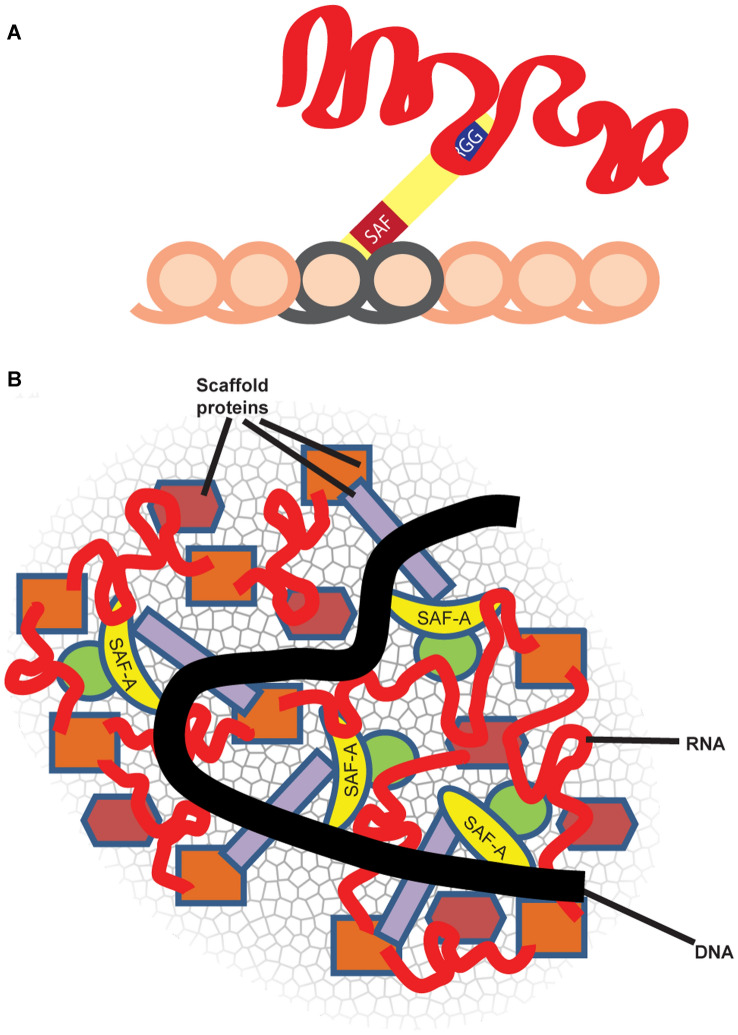Fig. 6.
Two contrasting models of RNA localization to chromatin and role of SAF-A: A RNA tethered to chromatin via SAF-A or related anchors: initial studies suggesting SAF-A was required to localize XIST RNA appear to support a model whereby SAF-A acts as a single-molecule bridge between RNA and chromatin, through its separate RNA and DNA binding domains. In this model, the RNA impacts chromatin by recruiting histone modifiers, as XIST RNA is known to do. B RNA is a platform for an RNP network, including SAF-A, that physically impacts chromosome structure. In this, the “Its complicated” model, SAF-A is one component that associates with chromatin in an RNA-dependent manner, and long RNAs and SAF-A are woven into a “fabric” of the interphase chromosome, with SAF-A one (important component) of an RNP scaffold that directly impacts chromatin structure

